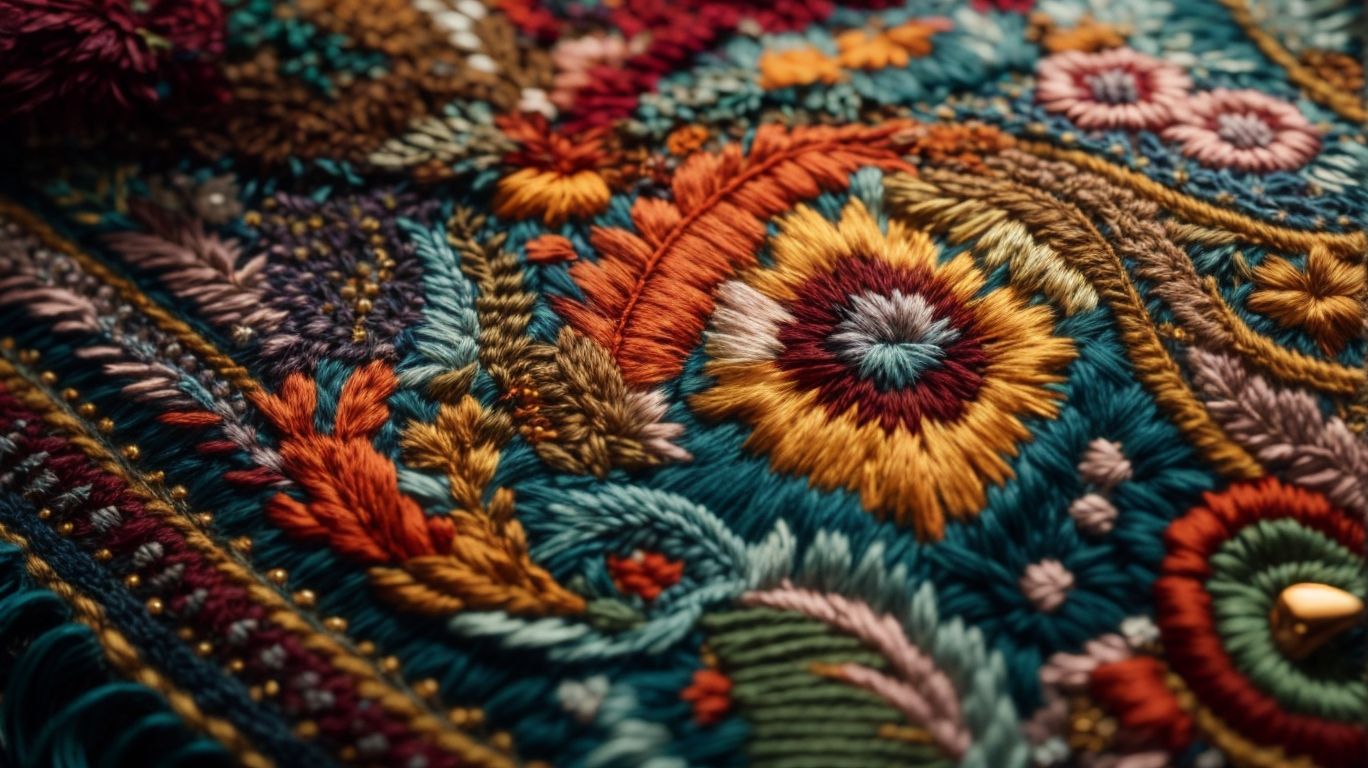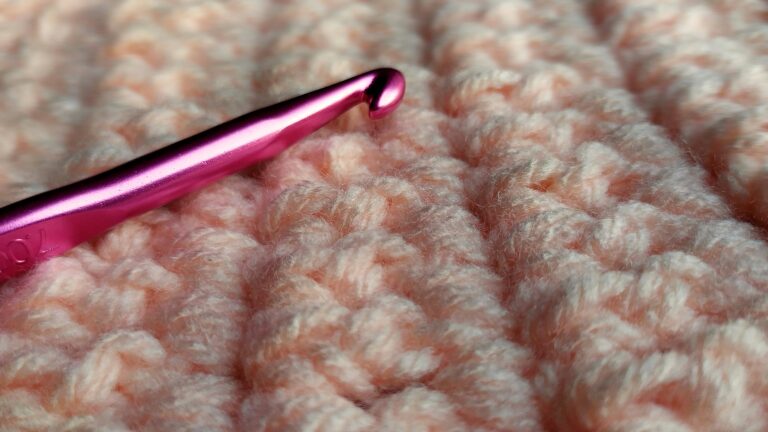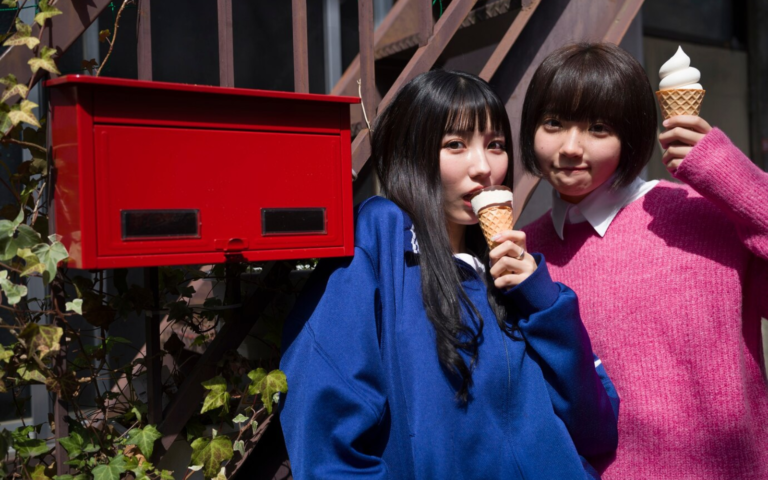Texture Talk: Exploring Innovative Stitch Patterns
What Is Texture in Stitching?
Texture in stitching refers to the tactile quality of a fabric created through the manipulation of stitches and patterns in knitting. In terms of incorporating texture into stitching, various factors come into play. The choice of colors can greatly impact the overall look and feel of the fabric, with subtle shades creating a different effect from bold and vibrant hues. The type of yarn used, whether it’s a smooth cotton or a fluffy wool, can significantly influence the texture of the final piece. Different techniques such as cable knitting, lacework, or ribbing also play a crucial role in creating depth and interest in the fabric, providing a multi-dimensional tactile experience to the observer.
Why Is Texture Important in Stitching?
Texture plays a crucial role in stitching as it adds depth, visual interest, and dimension to designs and patterns. In terms of knitted or embroidered pieces, the texture of the stitching can completely transform the overall look and feel. Different textures can evoke various emotions and enhance the tactile experience for the viewer. For instance, using techniques like ribbing or cabling can create a three-dimensional effect, making the fabric more dynamic and engaging. The choice of colors in stitching also plays a significant role in enhancing texture. By skillfully blending hues or using contrasting tones, the texture of the stitches can stand out and create a visually striking design. Whether it’s creating a soft, cozy texture with pastel colors or a bold, edgy texture with dark shades, colors can amplify the depth of the stitching.
What Are the Different Types of Stitch Patterns?
Various types of stitch patterns exist in stitching, including raised, embossed, twisted, lacy, cable, and combination stitches, each offering distinct visual and textural effects. Raised stitches, as the name suggests, create a texture that appears elevated from the fabric, adding dimension to the design. Embossed stitches are known for their ability to create a 3D effect, making the pattern stand out. Twisted stitches involve crossing the yarn over itself, giving a unique twisted look to the thread utilized. Lacy stitches, on the other hand, incorporate openings in the pattern, resulting in a delicate and airy finish. Cable stitches are characterized by their interlocking motif, mimicking actual cables, adding depth to the fabric. Combining different stitch types can lead to innovative and intricate designs that showcase the versatility of yarn and techniques in stitching.
Raised stitch patterns are created by working stitches that stand out from the fabric, adding a three-dimensional texture to the knitted or embroidered piece. One common technique to achieve raised stitch patterns is ‘cabling,’ where stitches are crossed over each other, creating a twisted effect that pops from the surface. Embossed stitches, also known as slip-stitch patterns, involve slipping stitches to create a raised appearance. Another method is ‘bobbles,’ creating small raised bumps on the fabric. The choice of yarn plays a crucial role in the effectiveness of these techniques. Textured or heavier yarns enhance the raised stitches, emphasizing the depth and dimension of the pattern. Mixing colors strategically can further accentuate the raised stitch patterns, adding visual interest and depth to the fabric.
Embossed and Twisted Stitch Patterns
Embossed stitch patterns create a raised, textured effect on the fabric, resembling embossed designs on paper or metal surfaces. This technique involves creating patterns by using varying stitch heights or manipulating the tension of the thread. By altering the stitch density or direction, intricate textures are formed, adding depth and dimension to the material. These designs can range from simple geometric shapes to elaborate motifs like flowers or vines, enhancing the visual appeal of the fabric. The tactile impact of embossed stitch patterns provides a sensory experience, inviting touch and exploration of the intricate details.
Twisted stitch patterns involve crossing stitches over each other to create a twisted effect, adding complexity and visual interest to the fabric. This technique is often used in knitting to enhance the overall design of sweaters, hats, and scarves. By intertwining the threads, the colors appear more vibrant and dynamic, giving the finished piece a three-dimensional look. Different combinations of twisted stitches can produce intricate patterns like cables, ropes, or lattice designs, elevating the texture of the garment. Embroiderers also utilize twisted stitch patterns in needlework to create beautiful motifs with a raised, textured surface that catches the light for a stunning effect.
Lacy, Cable and Combination Stitch Patterns
Lacy stitch patterns feature intricate openwork designs that create a delicate and airy texture in the fabric, ideal for adding elegance to knitwear or embroidery. The characteristic feature of lacy stitches is the intricate interplay of yarn overs, decreases, and sometimes eyelets, resulting in a lightweight and breathable fabric. This texture not only adds visual interest but also enhances the drape of the garment, making it perfect for creating ethereal shawls, delicate tops, or elegant wraps. Different techniques like yarn overs, knit 2 togethers, double decreases, and lace panel repeats are commonly used to achieve different lacy patterns, ranging from simple motifs to elaborate lace designs.
Cable stitch patterns involve twisting stitches to create interlocking braids or cables, adding depth and structure to the knitted or embroidered piece. Creating cable stitch patterns requires careful manipulation of the yarn to achieve the desired texture. To start, knitters typically use a cable needle to hold stitches temporarily out of the way. The process involves crossing stitches over each other to form the intricate designs. By varying the placement and direction of these crosses, artisans can produce a wide range of textures, from simple twists to complex braids. When worked with a thicker yarn, cable stitches stand out more prominently, creating a visually striking and tactile effect that elevates the overall look of the fabric.
Combination stitch patterns incorporate a mix of different stitches and techniques to create unique and visually appealing textures in the fabric, offering endless creative possibilities. The synergy of these various stitches not only adds depth and dimension to the fabric but also enables the creation of intricate designs that stand out. By combining different colors and patterns within these stitches, one can achieve a stunning interplay of visual elements, elevating the overall aesthetic of the piece.
How Can You Incorporate Texture into Your Stitching?
You can introduce texture into your stitching by experimenting with different stitch patterns, yarn types, color combinations, and adding embellishments for a unique and personalized touch. One effective way to enhance texture in your embroidery projects is by selecting stitch patterns that offer depth and dimension. Patterns like chain stitch, French knots, and seed stitch can bring a tactile element to your creations. To further elevate the textural appeal, consider mixing different yarn types such as wool, silk, or cotton to vary the feel and appearance of your stitches. Playing with contrasting color palettes can also make the texture pop, creating captivating visual interest in your work.
Experiment with Different Stitch Patterns and Use Different Types of Yarn
Experimenting with different stitch patterns allows you to explore various textures and create distinctive fabric effects in your knitting or embroidery projects. When you diversify the stitches you use, you open up a world of possibilities to enhance your creations. Consider incorporating a mix of intricate lace patterns, bold cables, or playful bobbles to add depth and dimension to your pieces. The choice of colors can also significantly impact the overall feel of your projects. Experiment with blending soft pastels for a delicate touch or opt for vibrant hues to make a bold statement. To take it a step further, try combining different techniques within a single piece for a truly unique and textured result.
Utilizing different types of yarn, such as textured or variegated yarn, can significantly impact the texture and overall appearance of your stitched creations. When selecting yarn for your projects, color plays a crucial role in determining the visual appeal of the final piece. Vibrant hues can bring energy and excitement, while subtle shades create a more calming effect. The designs within the yarn itself, whether it’s a solid color, self-striping, or speckled, can add depth and interest to your knitted or embroidered items. Experimenting with different yarn textures can elevate a simple pattern into a visually captivating workpiece, enhancing the tactile experience and making your creations truly unique.
Play with Color and Texture Combinations, Add Embellishments and Accents
Exploring color and texture combinations opens up a world of creative possibilities, allowing you to blend hues and tactile elements to enhance your stitching projects. In terms of creating visually captivating stitching projects, patterns and designs play a crucial role. Pairing bold colors with intricate textures can add depth and interest to your work. For example, experiment with combining a soft, plush yarn in a vibrant shade with a more subdued, matte thread to create a contrast that is both visually appealing and tactually intriguing. Consider incorporating geometric patterns with solid colors to achieve a modern and sophisticated look in your stitching endeavors. Incorporating embellishments and accents, such as beads, sequins, or embroidery stitches, can elevate the texture and visual appeal of your stitched projects. When adding beads, consider choosing colors that complement your fabric to create a cohesive look. Sequins can bring a touch of glamour or sparkle to any design, but remember, less is often more with sequins to avoid overwhelming the piece. Experiment with various embroidery techniques like French knots, satin stitches, or bullion stitches to add dimension and intricacy. Utilizing a mix of textures and colors can also enhance the visual interest of your project. Combining different types of embellishments or layering them strategically can produce stunning effects. Keep in mind the overall theme or style of your project to ensure the accents harmonize with the design.
What Are Some Examples of Innovative Stitch Patterns?
Innovative stitch patterns offer a fresh take on traditional techniques, introducing unique textures and designs that push the boundaries of stitching creativity. One unique example of modern stitch patterns is the entrelac technique, which creates a woven basket-like effect by knitting in a modular fashion. This technique is a departure from the usual linear approach of knitting, resulting in captivating geometric designs. Another innovative stitch pattern is the sashiko embroidery, originating from Japan, known for its intricate running stitch patterns that form visually striking motifs. Such modern interpretations of traditional techniques challenge the conventional notions of knitting and embroidery, inspiring artists and crafters to experiment with new textures and designs.
The seed stitch is a versatile and textural pattern created by alternating knit and purl stitches, resulting in a subtle, nubby texture that adds depth to knitted pieces.This pattern is well-loved for its ability to create visually appealing fabrics that work beautifully with a wide range of colors and yarn types. The alternating stitches give the fabric a unique look, making it ideal for scarves, blankets, and even sweaters. The seed stitch is also great for adding interest to simple designs, bringing a touch of sophistication to any project. Its reversible nature allows for versatility in the final appearance of the piece, adding versatility to your knitting repertoire.
The basketweave stitch creates a woven appearance resembling a traditional basket weave, offering a structured and visually appealing texture to knitted fabrics. This stitch pattern is achieved by knitting blocks of knit and purl stitches that create a unique interlocking effect. The alternating stitches give depth and dimension to the fabric, making it ideal for scarves, blankets, and even sweaters. Color choice plays a significant role in enhancing the intricate design, as using contrasting hues can elevate the pattern’s beauty and intricacy. The basketweave stitch is versatile, suitable for both beginner and advanced knitters, providing a rewarding challenge with its intricate yet straightforward technique.
The herringbone stitch features a distinctive zigzag pattern reminiscent of the fishbone structure, adding a sophisticated and textured look to knitted or embroidered pieces. One of the key characteristics of the herringbone stitch is its versatility and ability to create visually pleasing designs. This stitch can be used in a variety of projects such as scarves, blankets, and even garments, adding a touch of elegance and style. It is ideal for both beginner and experienced crafters due to its simple yet impactful nature. The herringbone stitch allows for experimentation with different textures and yarn weights, offering endless possibilities to create unique and personalized items.
The honeycomb stitch creates a hexagonal pattern resembling a honeycomb structure, offering a geometric and visually intriguing texture to knitting projects.The honeycomb stitch is characterized by its intricate design, creating a three-dimensional effect that adds depth and interest to garments and accessories. When worked in contrasting colors, this pattern can truly pop, showcasing the geometric shapes in a bold and modern way. It is a versatile stitch that can be used for various items, from cozy blankets to stylish sweaters.
The brioche stitch creates a reversible ribbed fabric with a lofty texture, perfect for adding warmth and visual interest to knitted garments.The unique characteristic of the brioche stitch lies in its dual-color pattern, which showcases contrasting hues superbly. Color selection can greatly impact the final look, enabling knitters to play with bold or subtle combinations. The stitch’s distinct ridges and valleys result from a combination of slipped stitches and yarn overs, offering a three-dimensional effect. This texture not only enhances scarves and sweaters but also lends itself well to cozy accessories like hats and cowls.
The entrelac stitch technique creates a fabric with a woven appearance, resembling interlocking diamonds or squares, offering a dynamic and visually striking texture to knitting projects. When pieces are crafted using the entrelac stitch method, each block is worked individually in a tiered fashion, creating a captivating interlocked effect. The colors chosen for each block can dramatically influence the overall look, allowing for endless creative variations in designs – from bold contrasts to subtle gradients. This technique is particularly popular for creating intricate patterns like chevrons, argyle, or even plaid. The rhythmic repetition of the entrelac stitch adds depth and dimension, enhancing the visual appeal of the finished piece.
How Can You Use Innovative Stitch Patterns in Your Projects?
Incorporating innovative stitch patterns into your projects can elevate the visual appeal and creative depth of your knitting or embroidery work, offering a fresh and modern take on traditional techniques. Experimenting with bold color combinations or subtle tonal shifts in these new stitch patterns can enhance the overall aesthetic of your pieces, adding layers of complexity and interest. Playing with contrasting textures within the stitches can create a tactile experience that engages both the eyes and the sense of touch, bringing a dynamic element to your crafting endeavors.
The Role of Tools and Techniques in Enhancing Stitch Patterns
In the realm of creative stitching, the tools and techniques employed can dramatically affect the final appearance and quality of the work. Understanding the role of various tools and how they interact with different techniques is essential for any crafter looking to elevate their projects. From needles and hooks to frames and stabilizers, each tool brings its unique contribution to the crafting process.
Needles, the most fundamental of stitching tools, come in a variety of sizes and shapes, each designed for specific types of yarn and stitch patterns. The choice of needle can affect the tension, uniformity, and even the ease of stitching. For instance, using a larger needle with a fine yarn can create a looser, more open texture, while a smaller needle can produce a tighter, more defined stitch. Similarly, the type of hook used in crochet can influence the texture and tightness of the stitch, impacting the overall pattern and feel of the project.
Stitching frames and hoops are other critical tools that assist in maintaining even tension across the work. This is particularly important when working with intricate patterns or when combining different types of stitches in a single project. A well-stretched fabric in a hoop or frame prevents puckering, ensures even stitch density, and contributes to the aesthetic and structural integrity of the finished piece.
In addition to hardware, the techniques used can significantly modify the texture and visual impact of a stitch pattern. For example, varying the stitch length or incorporating incremental increases or decreases in stitch count can create subtle gradations or dramatic textural effects. Techniques such as blocking and pressing, which are often used after the stitching is completed, also play a vital role. They help in setting the stitches, enhancing the fabric’s drape, and emphasizing the textural details of the pattern.
Furthermore, the integration of advanced techniques like three-dimensional stitching, where layers of stitches are built up to form raised patterns, can transform a simple project into a tactile masterpiece. Such techniques require not only skill but also a deep understanding of how different stitches interact with each other and how they can be manipulated to achieve the desired effect.
Lastly, the use of stabilizers and interfacing materials can not only enhance the workability of the fabric but also aid in achieving more precise and firm stitch patterns. These materials support the fabric, especially when employing heavy or complex stitch patterns that might otherwise distort the fabric or lead to uneven texture.
While the choice of stitch patterns and yarns is fundamental to textile crafting, the tools and techniques used are equally critical. They not only facilitate the crafting process but also enhance the expressiveness and functionality of the stitch patterns. By carefully selecting and mastering the appropriate tools and techniques, crafters can achieve superior results and bring innovative textures to life in their projects. This holistic approach to stitching empowers crafters to push the boundaries of what can be achieved with needle and thread, paving the way for more intricate and visually engaging textile art.







